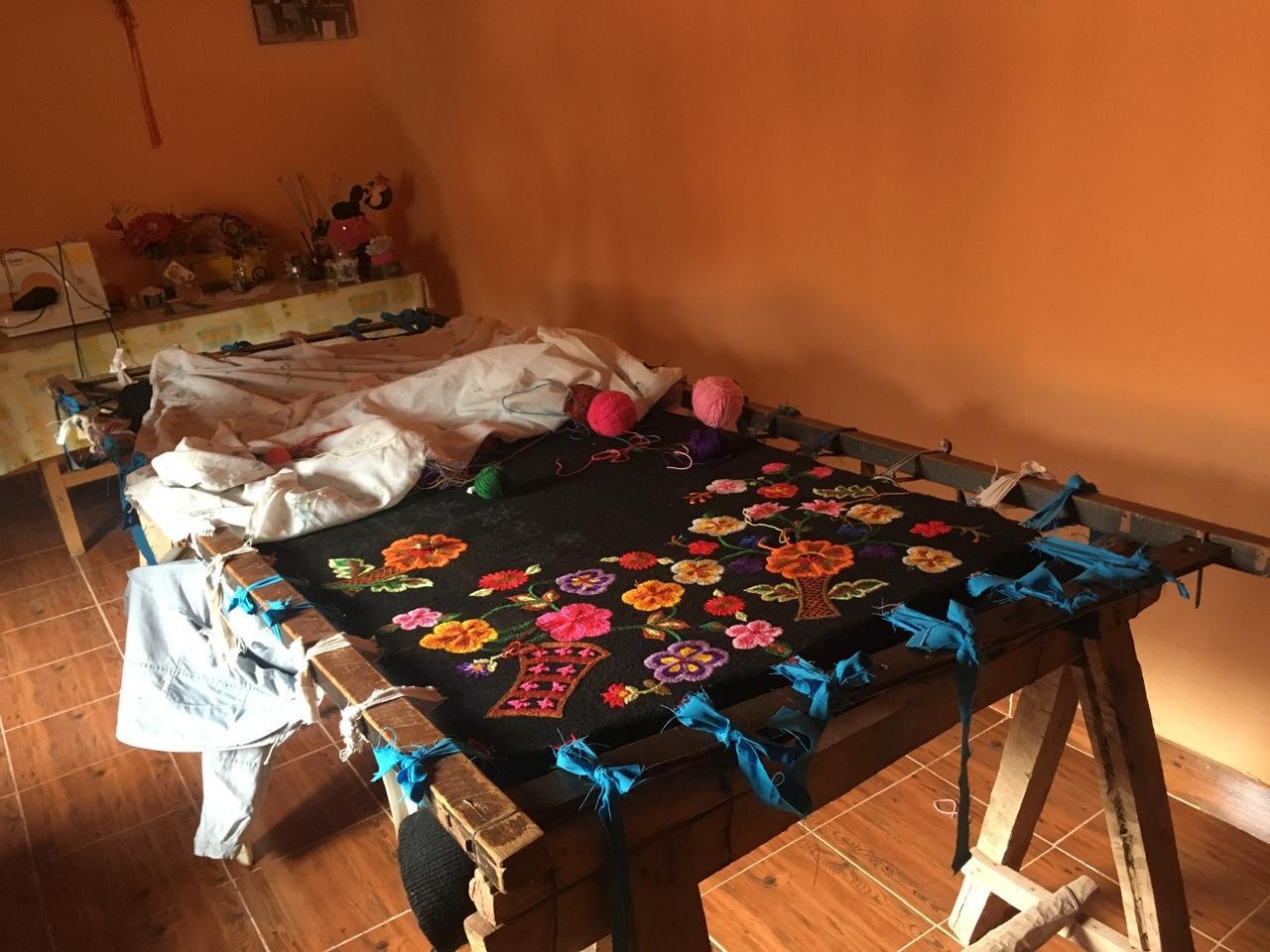Tinogasta, embroidered village
THE PROJECT
Since 2017, I have been leading a research and collaborative design project focused on the traditional embroidery of Tinogasta, Catamarca. This work originated as part of my Master's thesis in Social Anthropology and is also enriched by my training in textile design. Over the years, I have worked alongside embroiderers from different communities, recovering original floral motifs and organizing intergenerational workshops and gatherings where each woman brought an inherited blanket to share her story.
My role was both ethnographic and design-oriented: I photographed a large number of embroidered quilts, encouraged the development of new textile products with the artisans—taking into account the difficulties in accessing raw materials—and collaborated in the drawing, painting, and “pinching” of the fabrics. Together, we revitalized patterns that were being replaced by global images, and we succeeded in getting many women to embroider flowers several times a week in community workshops promoted by the Municipality.
SOCIAL DESIGN
By examining the meaning embedded in the floral textile designs passed down through families—where knowledge, stories, hierarchies, and daily social life converge around large embroidery frames—it becomes clear that these embroidered pieces have significantly evolved due to historical, political, and economic changes. Such transformations have led to new forms, designs, and materialities that go beyond conventional classifications like “traditional crafts,” “folk art,” or “heritage.”
Textile design here is not only a creative practice, but also a social tool that reflects local modes of organization and leaves traces of broader historical contexts. The mirrored patterns often found in these embroideries act as silent witnesses to social and territorial shifts, showing how collective making processes adapt to changing realities. This perspective highlights design as a socially embedded practice capable of activating memory, strengthening community ties, and revitalizing endangered knowledge systems.
INNOVATION
The difficulty in accessing raw materials created an opportunity to activate design tools, incorporating new materials and aesthetic proposals, while always reinforcing local knowledge structures surrounding traditional Tinogasta embroidery and fostering the creativity of the women involved.
ACADEMIC PRESENTATIONS AND PUBLICATIONS
2024: DISUR Congress, Valparaíso (Chile): Presentation Designs of Yesterday and Today. The Embroidered History of Tinogasta, in which I analyze the tension between tradition and contemporary creation.
Published paper: https://disenouv.cl/wp-content/uploads/2025/04/LIBRO-PONENCIAS-DISUR2024-3-2025-Diseno-uv.pdf
2023: Master’s Thesis (UNSAM): The Guardians of the Embroidered Blankets. Heritage, Gender, and Hierarchies in Tinogasta.
This research recovers declining techniques, stories, and textile practices through a situated and committed approach.
Available at: https://ri.unsam.edu.ar/handle/123456789/2288?mode=full and https://noticias.unsam.edu.ar/evento/exposicion-oral-y-evaluacion-de-tesis-maestria-en-antropologia-social-11/
2021: University of Palermo, VI Design Colloquium: The Guardians of the Embroidered Blankets: Secrets and Hierarchies in Tinogasta, published in Cuadernos del Centro de Estudios de Diseño y Comunicación.
Full article: https://doi.org/10.18682/cdc.vi131.4970
2020: V Virtual International Design Colloquium, University of Palermo: Participation in the panel “Design and Ethnography” with a paper addressing hierarchies and modes of transmission within the local textile world.
ACKNOWLEDGMENTS
To the artisans of Tinogasta, the Knez and Yoma families, audiovisual producer Mariel Bomczuk, Dr. Patricia Vargas, the “Cosas cotidianas” Study Group (IDES-CONICET), and the Municipality of Tinogasta.














